Filter by
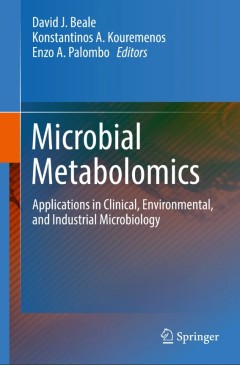
Microbial Metabolomics
This book brings together contributions from global experts who have helped to facilitate the exciting and rapid advances that are taking place in microbial metabolomics. The main application of this field is in clinical and veterinary microbiology, but there is a great potential to apply metabolomics to help to better understand complex biological systems that are dominated by multiple-species…
- Edition
- 1
- ISBN/ISSN
- 978-3-319-46324-7
- Collation
- VII, 321
- Series Title
- -
- Call Number
- -
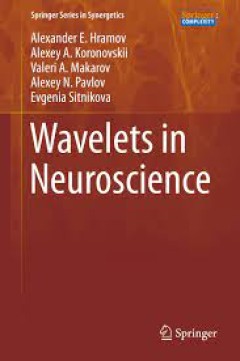
Wavelets in Neuroscience
This book examines theoretical and applied aspects of wavelet analysis in neurophysics, describing in detail different practical applications of the wavelet theory in the areas of neurodynamics and neurophysiology and providing a review of fundamental work that has been carried out in these fields over the last decade. Chapters 1 and 2 introduce and review the relevant foundations of neuroph…
- Edition
- -
- ISBN/ISSN
- 978-3-662-43850-3
- Collation
- XVI, 318
- Series Title
- -
- Call Number
- -

Volcanic Lakes
This book aims to give an overview on the present state of volcanic lake research, covering topics such as volcano monitoring, the chemistry, dynamics and degassing of acidic crater lakes, mass-energy-chemical-isotopic balance approaches, limnology and degassing of Nyos-type lakes, the impact on the human and natural environment, the eruption products and impact of crater lake breaching eruptio…
- Edition
- -
- ISBN/ISSN
- 978-3-642-36833-2
- Collation
- IX, 533
- Series Title
- -
- Call Number
- -
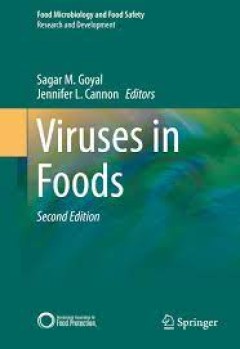
Viruses in Foods
Foodborne viruses are an important group of pathogens recognized to cause significant disease globally, in terms of both number of illnesses and severity of disease. Contamination of foods by enteric viruses, such as human norovirus and hepatitis A and E viruses, is a major concern to public health and food safety. Food Virology is a burgeoning field of emphasis for scientific research. Many de…
- Edition
- -
- ISBN/ISSN
- 978-3-319-30723-7
- Collation
- XIII, 512
- Series Title
- -
- Call Number
- -
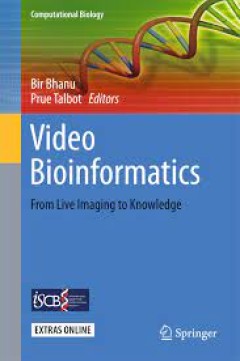
Video Bioinformatics From Live Imaging to Knowledge
The advances of live cell video imaging and high-throughput technologies for functional and chemical genomics provide unprecedented opportunities to understand how biological processes work in subcellular and multicellular systems. The interdisciplinary research field of Video Bioinformatics is defined by Bir Bhanu as the automated processing, analysis, understanding, data mining, visualizati…
- Edition
- -
- ISBN/ISSN
- 978-3-319-23724-4
- Collation
- XLIII, 381
- Series Title
- -
- Call Number
- -

Veterinary Oncology A Short Textbook
This highly readable textbook provides a comprehensive but concise overview of the principles of oncogenesis in veterinary medicine, discussing selected tumors in domestic animals in detail, and addressing cancer diagnostics and therapy. All chapters are illustrated with histological and radiological images to enhance readers’ understanding. Accordingly, the book is a must-have reference guid…
- Edition
- -
- ISBN/ISSN
- 978-3-319-41124-8
- Collation
- VII, 316
- Series Title
- -
- Call Number
- -
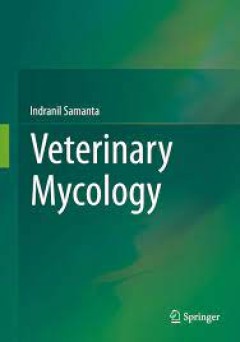
Veterinary Mycology
This book is a comprehensive overview of the fungi that are clinically relevant for animals and humans. It is divided in three major parts: the first part comprises the history of veterinary and medical mycology, general aspects of morphology, growth, nutrition, reproduction and classification of fungi. In the second part, the etiologic agents of cutaneous, subcutaneous and systemic mycoses are…
- Edition
- -
- ISBN/ISSN
- 978-81-322-2280-4
- Collation
- XIX, 179
- Series Title
- -
- Call Number
- -

Vertebrate Myogenesis Stem Cells and Precursors
This book addresses the differentiation control of skeletal muscle in different locations of the vertebrate body Particular attention is paid to novel regulatory molecules and signals as well as the heterogeneity of origin that have revealed a developmental overlap between skeletal and cardiac muscle. Different functional muscle groups are the product of the evolution of the vertebrate classes,…
- Edition
- -
- ISBN/ISSN
- 978-3-662-44608-9
- Collation
- 2 b/w illustrations, 23 illustrations in colour
- Series Title
- -
- Call Number
- -
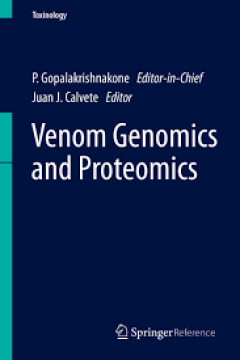
Venom Genomics and Proteomics
This volume provides the reader with recent advances in the fields of molecular toxinology, the biotechnological applications of venom toxins, and antivenom production. The content of the twenty chapters of Venom Genomics and Proteomics illustrates not only the enormous progress made since the implementation of omics technologies in the field of toxinology, but one also realizes the road still …
- Edition
- -
- ISBN/ISSN
- 978-94-007-6416-3
- Collation
- XXI, 454
- Series Title
- -
- Call Number
- -

Lung Cancer and Personalized Medicine: Novel Therapies and Clinical Management
This, the second of two volumes on personalized medicine in lung cancer, touches upon the recent progress in targeted drug development based on genomics; emerging biomarkers and therapeutic targets such as EMT, cancer stem cells, and the tumor microenvironment; current personalized clinical management and radiation therapy for lung cancers; and the promise of epigenetics and next-generation seq…
- Edition
- -
- ISBN/ISSN
- 978-3-319-24932-2
- Collation
- -
- Series Title
- -
- Call Number
- -
 Computer Science, Information & General Works
Computer Science, Information & General Works  Philosophy & Psychology
Philosophy & Psychology  Religion
Religion  Social Sciences
Social Sciences  Language
Language  Pure Science
Pure Science  Applied Sciences
Applied Sciences  Art & Recreation
Art & Recreation  Literature
Literature  History & Geography
History & Geography